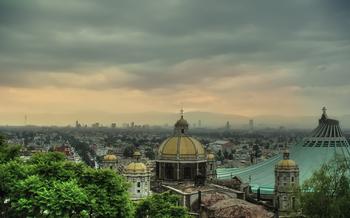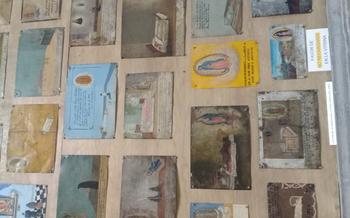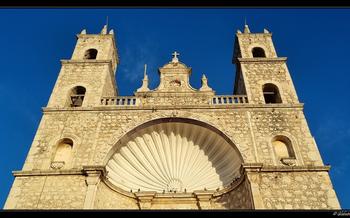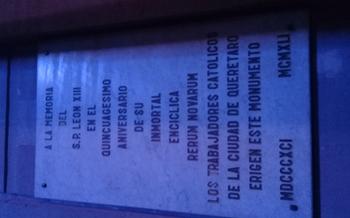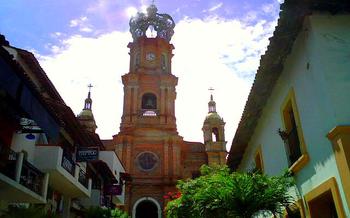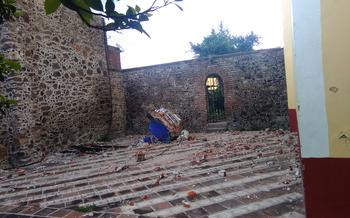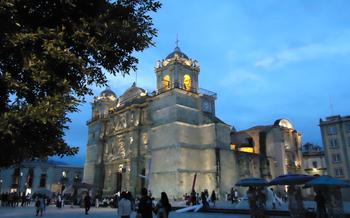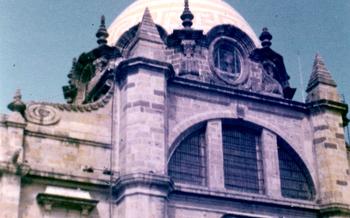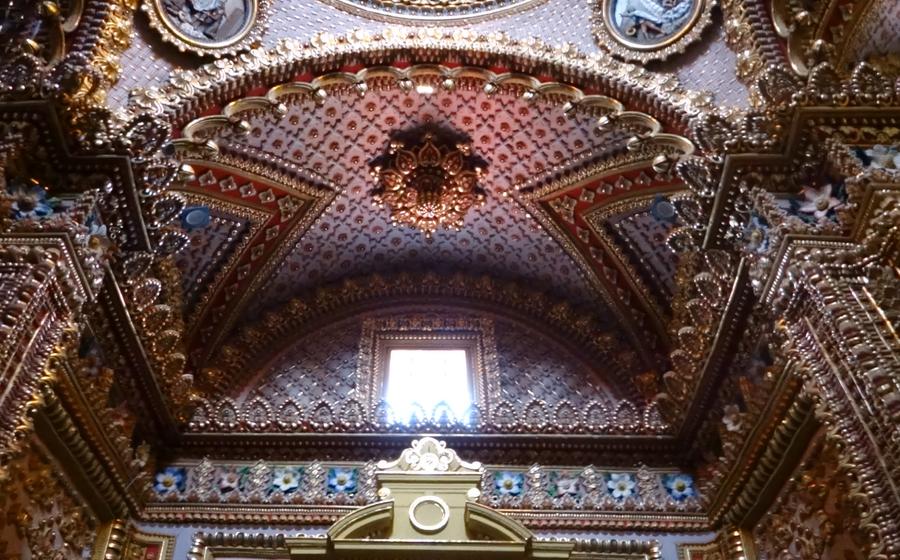
Santuario de Guadalupe
- Historical Significance, Architectural Features, Religious Importance, and Cultural Events
- Location and Accessibility
- Hours of Operation and Admission
- Guided Tours and Self-Exploration
- The Sanctuary's Historical Significance
- Celebrating Religious Festivals
- Mesmerizing Architecture and Design
- Shopping for Religious Souvenirs
- Capture Stunning Photographs
Historical Significance, Architectural Features, Religious Importance, and Cultural Events
The Santuario de Guadalupe in Morelia, Mexico, is a prominent historical and religious landmark. Its construction began in 1710 as a humble chapel dedicated to the Virgin of Guadalupe, Mexico's patron saint. Over the centuries, the chapel underwent several expansions and renovations, resulting in the magnificent structure we see today.
The Santuario's architectural features are a blend of Neoclassical and Baroque styles. Its Neoclassical facade boasts intricate carvings and sculptures, while the interior is adorned with Baroque elements such as ornate altars, gilded decorations, and domed ceilings.
The Santuario holds immense religious significance for Mexican Catholics. It is one of the most important pilgrimage sites in the country, attracting millions of devotees each year. The miraculous image of the Virgin of Guadalupe, housed within the Santuario, is a source of great veneration and is believed to have healing powers.
Throughout the year, the Santuario hosts numerous cultural events, including concerts, art exhibitions, and traditional dance performances. These events showcase the rich cultural heritage of Mexico and provide an opportunity for visitors to immerse themselves in the local traditions.
Location and Accessibility
The Santuario de Guadalupe is situated in the heart of Morelia's historic center, at the intersection of Nigromante and Abasolo streets. Its prominent location makes it easily accessible on foot from other popular attractions in the city. Visitors can take advantage of the designated parking areas nearby to ensure a hassle-free visit. Alternatively, local transportation options, such as buses and taxis, offer convenient access to the Santuario, ensuring a seamless journey for pilgrims and tourists alike.
Hours of Operation and Admission
The Santuario de Guadalupe welcomes visitors throughout the week, offering ample opportunities for exploration and reflection. Its doors are open from 7:00 AM to 8:00 PM, inviting pilgrims and tourists alike to immerse themselves in its sacred atmosphere.
Admission to the Santuario is free of charge, allowing everyone to experience its spiritual and historical significance without financial barriers. This open-door policy reflects the Santuario's commitment to inclusivity and accessibility, ensuring that all who seek solace, inspiration, or cultural enrichment can find it within its walls.
For those seeking a deeper understanding of the Santuario's rich history and symbolism, guided tours are available at a nominal fee. These guided tours offer insights into the Santuario's architectural features, religious significance, and cultural impact, providing visitors with a comprehensive and enriching experience.
Guided Tours and Self-Exploration
The Santuario de Guadalupe offers guided tours to enhance the visitor experience. These tours are led by knowledgeable guides who share insights into the history, architecture, and religious significance of the sanctuary. Tours are available in Spanish and English and typically cover the main altar, side chapels, and the miraculous image of the Virgin of Guadalupe. The cost of guided tours is minimal and can be booked in advance or upon arrival.
For those who prefer to explore the sanctuary at their own pace, self-exploration is also an option. Visitors can wander through the sanctuary's interior, marveling at the intricate details and symbolism of the architecture. Highlights of self-exploration include the stunning stained glass windows, which depict scenes from the life of the Virgin Mary and the history of the sanctuary, as well as the murals adorning the walls, which tell stories of faith, devotion, and miracles.
The Sanctuary's Historical Significance
The Santuario de Guadalupe holds immense historical significance, deeply intertwined with the story of Mexico. During the Mexican War of Independence, it served as a refuge for insurgent leaders, who sought solace and guidance amidst the turmoil. The sanctuary's walls echoed with prayers for freedom and independence, becoming a symbol of resistance against colonial rule.
Emperor Maximilian and Empress Carlota, who ruled Mexico from 1864 to 1867, held a deep reverence for the Santuario. They frequently visited the sanctuary, seeking divine intervention and support during their turbulent reign. The imperial couple's devotion to the Virgin of Guadalupe left an indelible mark on the sanctuary's history, further solidifying its status as a sacred and revered site.
Over the years, the Santuario de Guadalupe has witnessed several papal visits, each marking a significant milestone in its history. Pope John Paul II visited the sanctuary in 1979 and 1990, drawing millions of pilgrims and faithful from across the country. Pope Benedict XVI followed in 2012, reaffirming the sanctuary's importance as a center of Catholic devotion and pilgrimage.
In recent years, the Santuario de Guadalupe has undergone extensive restoration efforts, meticulously preserving its architectural grandeur and religious significance. These efforts have been instrumental in safeguarding the sanctuary's heritage for future generations, ensuring that it continues to inspire and awe visitors from around the world.
Celebrating Religious Festivals
The Santuario de Guadalupe comes alive during religious festivals, particularly the annual feast day of the Virgin of Guadalupe on December 12th. Thousands of pilgrims flock to Morelia to pay homage to the Virgin and seek her blessings. Special masses and processions take place throughout the day, accompanied by traditional music, dance, and food stalls. The atmosphere is electric, filled with devotion, and a sense of community. Participating in these festivities is a truly immersive experience, allowing visitors to witness the deep faith and cultural traditions of the Mexican people.
Mesmerizing Architecture and Design
The Santuario de Guadalupe in Morelia boasts an awe-inspiring fusion of architectural styles, showcasing the grandeur of Neoclassicism and the intricate artistry of the Baroque era. Its imposing Neoclassical facade captivates visitors with its symmetrical design, featuring intricate carvings, detailed cornices, and elegant pilasters. The Baroque influence is evident in the interior, where ornate decorations, opulent embellishments, and dramatic lighting create a sense of grandeur and reverence. Domed ceilings soar overhead, supported by graceful arches, while the walls are adorned with intricate murals depicting religious scenes and the life of the Virgin of Guadalupe. Every element of the Santuario's architecture is meticulously crafted, symbolizing the deep faith and devotion of the Mexican people.
Shopping for Religious Souvenirs
Amidst the spiritual ambiance of the Santuario de Guadalupe, visitors can immerse themselves in a unique shopping experience. Stalls line the periphery, offering a diverse array of religious souvenirs that cater to pilgrims and visitors alike. From intricately crafted candles and rosaries to delicate statues of saints and the Virgin of Guadalupe, these items hold profound significance for the faithful.
Religious souvenirs serve as tangible mementos of one's visit to the sanctuary, symbolizing devotion and remembrance. Whether seeking a gift for a loved one or a cherished keepsake for oneself, the Santuario provides an opportunity to support local artisans while acquiring meaningful objects.
The stalls also offer a glimpse into the vibrant artistry and craftsmanship of the region. Local artisans pour their heart and soul into creating these religious items, perpetuating traditional techniques and designs that have been passed down through generations. By purchasing these souvenirs, visitors not only take home a piece of the Santuario's spirituality but also contribute to the preservation of local heritage.
As you browse through the stalls, you'll discover a treasure trove of unique souvenirs that capture the essence of the Santuario. From intricate silver jewelry to hand-painted ceramics, each item carries a story and reflects the deep-rooted faith of the Mexican people.
Whether you're a fervent believer or simply appreciate the beauty of religious art, shopping for souvenirs at the Santuario de Guadalupe is an enriching experience that allows you to connect with the spiritual traditions of Mexico while supporting local artisans.
Capture Stunning Photographs
The Santuario de Guadalupe offers a feast for the eyes, making it a photographer's paradise. Capture the grandeur of the neoclassical facade, with its intricate carvings and imposing presence. Step inside to photograph the awe-inspiring Baroque-style interior, adorned with opulent decorations, domed ceilings, and ornate arches. Don't miss the stunning stained glass windows, which bathe the sanctuary in a kaleidoscope of colors. If you're lucky enough to witness a religious ceremony or procession, seize the opportunity to capture the vibrant energy and devotion of the faithful. Share your captivating photos on social media, inspiring others to embark on their own pilgrimage to this architectural and spiritual masterpiece.

